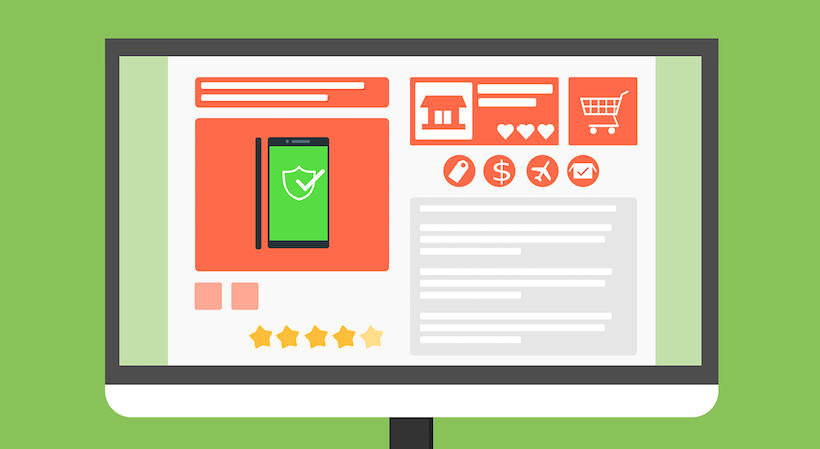In order to stay ahead, e-commerce startups must implement sharp, agile strategies that allow them to adapt to emerging technologies and consumer trends. By focusing on long-term value rather than short-term gain, you’ll future-proof your business and stay ahead of your competitors.
Go agile
Brands can develop a more agile and efficient way of working by adopting a test-and-improve approach to projects.
One such approach is working to a Minimum Viable Product (MVP). Instead of charging in head-first and building your site in one go, MVP means that you can launch quickly once the essential components are completed.
By doing this, you can start testing from launch date with real customer feedback, helping you to prioritize improvements. It’s also cheaper and more straightforward to launch small and improve as you go, rather than having to completely redesign and rebuild if your site misses the mark. Working this way will also prevent costs from getting out of hand.
To summarize, by working in an agile way, you can:
- Launch more quickly
- Start testing earlier
- Save money
- Identify problems faster
- Meet your customers’ needs
Related: 4 Ways to Win E-Commerce Sales With UPC Codes
Invest in the right technology
When choosing a platform for your site, it’s wise to choose one that’s well-supported and regularly updated. To keep things running smoothly, it’s also important to keep on top of updates for your platform. By building, testing and improving over time, you can respond to the needs of your customers.
If you have big plans for growth, you also need to make sure you’re happy with your enterprise resource planning, or ERP, system. Anything that’s hindering efficiency or increasing the admin burden at this stage will only become more prominent as your startup scales up.
The key takeaway here is to stop talking about projects with a start and an end. Focus on continuous improvement over time, and invest wisely.
By investing in the right technology you will:
- Find more technical support online
- Benefit from rolling updates
- Build a site that grows with your business
- Reduce your reliance on your web development agency
Focus on lifetime value, not just immediate ROI
Marketers have an uphill struggle when it comes to proving the value of their branding activities. If you’re reviewing your budgets annually, your finance department may expect to see a healthy ROI in a short time to justify marketing spend.
This may encourage short-term gain marketing initiatives (like focusing on attracting new customers, rather than looking at retention) and the security and long-term gains focusing on lifetime ROI are lost as we lose sight of the big picture.
It’s important to recognize that a customer does not represent a single transaction and that an ongoing relationship can be far more valuable than any one-time exchange (and it’s also important to measure this).
Avoid introductory discounts and short-term acquisition initiatives if you’re finding your customers aren’t returning. If people are only joining you because of a discount, they’re unlikely to stay around for long.
By looking at building lasting value and improving the customer journey, not only will you gain loyal customers, but you’ll also see your bottom line improve over long periods of time.
Focusing on lifetime customer value will:
- Make smarter investments
- Encourage returning customers
- Improve the customer journey
Sponsored: Visit our Dell partner page for discounts and exclusive offers
Don’t get complacent
Your brand is more than your product offering. Brands can evolve and adapt, whereas products or business models can become obsolete as technology evolves and trends change.
Take Blockbuster, for example. If they’d focused on the problem they solved for consumers (making movies cheap and accessible) and found better ways to do that, rather than clinging to their business model (large percent of revenue from late fees, and reliance on physical stores for visibility), they might have found it easier to take advantage of the opportunities that tech advancements presented. Netflix even approached them in 2000 with a partnership offer, and were laughed out the door.
Likewise, SEO tactics that worked in the past can always come back to bite you. “If it ain’t broke, don’t fix it” doesn’t really apply to SEO. You don’t want to wait until your site’s been penalized to adopt best practice. Just because you haven’t been penalized for thin content and bad backlinks yet, doesn’t mean you won’t be. And it’s much easier to make changes on your own terms than it is to react after the fact.
SEO is also an ongoing process. The web is constantly changing — what works today won’t necessarily work tomorrow. If your efforts stand still but your competitors push ahead, you may find yourself falling behind.
Although product releases and promoting products is important, focus on your brand and the problem it solves, as this can stop you losing sight of what you’re trying to achieve.
To remain ahead of the competition:
- Evolve and adapt with your customer’s needs
- Invest in ongoing SEO
- Focus on developing your brand
Sign Up: Receive the StartupNation newsletter!
Plan ahead
Planning ahead will save you time and money in the long run. Using tools like Google Trends, as well as previous years’ data, can help you identify seasonal trends and ensure you’re well positioned to take advantage of the opportunity they bring.
For example, if there is an uptick in searches for “engagement rings” in November in the lead up to Christmas, continuing into December, this gives you a great indication of when you should start to push your engagement ring campaigns, should you be a jewelry seller.
To wrap up
The key to future-proofing your business is to build your brand. Spend time finding your unique position, keep an eye on trends in your industry and invest wisely in owned long-term assets like your website.






